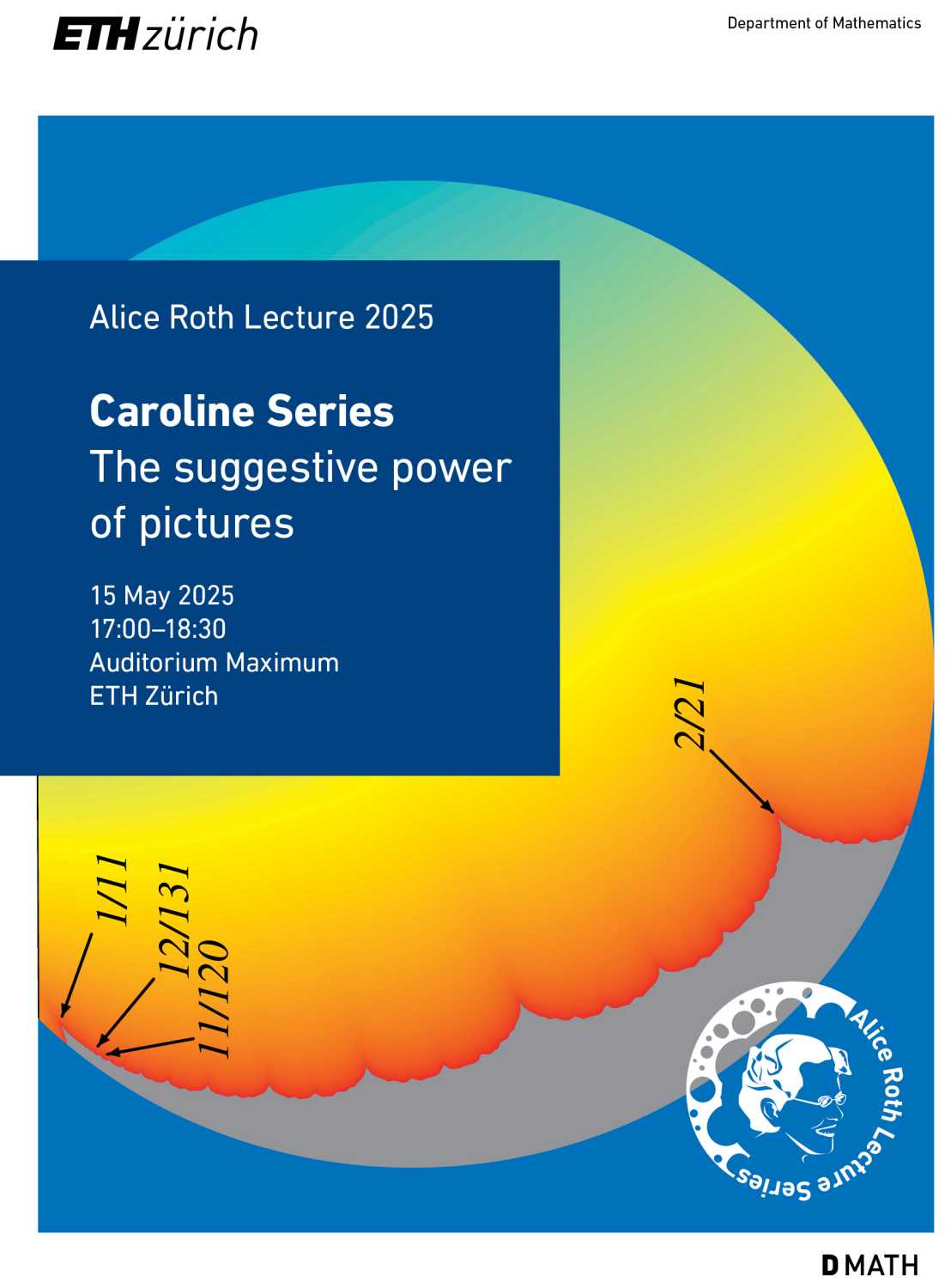Alice Roth Lecture 2025
Wir freuen uns, Professor Caroline Series als Hauptrednerin der Alice Roth Lecture 2025 ankündigen zu können.
Über Caroline Series
Caroline Series ist eine britische Mathematikerin, die für ihre Arbeiten in der hyperbolischen Geometrie, Kleinschen Gruppen und dynamischen Systemen bekannt ist. Sie schloss ihr Mathematikstudium 1972 mit einem B.A. ab, erhielt anschliessend ein Kennedy-Stipendium und promovierte 1976 an der Harvard University. Nach ihrer Promotion hatte sie akademische Positionen an der University of California, Berkeley, sowie am Newnham College in Cambridge inne. 1978 trat sie eine Stelle an der University of Warwick an, wo sie zur Professorin aufstieg und bis zu ihrer Emeritierung im Jahr 2015 tätig war.
Für ihre wissenschaftlichen Leistungen wurde sie mehrfach ausgezeichnet. 1987 erhielt sie den Junior Whitehead-Preis der London Mathematical Society, 2016 wurde sie als Fellow in die Royal Society aufgenommen. 2023 wurde ihr für ihre Verdienste um die Mathematik der Titel Commander of the Order of the British Empire (CBE) verliehen.
Abstract (Englisch)

Mathematicians have always used diagrams to aid their work, however computer graphics have introduced a powerful new tool.
Towards the end of the nineteenth century, the German mathematician Felix Klein investigated patterns obtained by iterating certain groups acting on the complex plane, now called Kleinian groups. Almost a century later, computer graphics made by David Mumford and David Wright revealed the astonishing variety and beauty of the fractal patterns Klein envisaged. Each pattern is obtained by iterating a small number of linear fractional transformations, as explained and illustrated in our book Indra's Pearls. Each one depends on a few complex parameters and systematic exploration in the parameter space pointed to a complicated hypothetical boundary between 'good' and 'bad' behaviour.
Kleinian groups can also be interpreted as isometries of three dimensional hyperbolic space and further study of the pictures revealed close links to developments in contemporary three dimensional hyperbolic geometry. Applying some of the new techniques led to new computer plots, this time in a parameter space in which each point represents a single group. Our results confirmed that the boundary between different types of behaviour is indeed fractal-like, and gave impetus towards proving some deep theorems about hyperbolic three manifolds. More recently the plots have led to further conjectures which are the object of ongoing research.